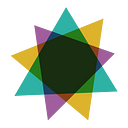How to Learn Data Visualization, and What to Do Next. Plus, Sign Up to Lend Your Data-Viz Skills to the COVID-19 Response.
It’s never too late to develop your data visualization skills and add to your data viz toolkit. Because of its interdisciplinary nature, people come to the field as designers, researchers, data scientists, business analysts, journalists, and countless other professions and backgrounds.
For all of us, visualization creates new opportunities for understanding data and communicating information, which often opens the door to deepening our work. There’s no singular way to learn data visualization, and no particular program or method that you need to start with, but there are roadmaps and key ideas to keep in mind along the way.
Will Chase published the first in a series of articles about “Constructing a Career in Data Viz.” He likens building a data viz portfolio and skill set to building a house — they both start with data, design, and tools. “You don’t need to learn everything at once, and by breaking down your education into smaller more defined areas, you can focus on building deeper expertise in one area without becoming overwhelmed by the deluge of potential skills you could learn.”
One of the challenges to getting started with data visualization is knowing which of the many tools and softwares to learn. Phil Hawkins’s “So You Want to Pick a Data Viz Platform: Part 3” focuses on Tableau, breaking down its strengths and its place in the data viz universe. (Part 1 covered Excel and Part 2 Python.)
If you read Phil’s piece and decide to experiment with Tableau, you’ll also want to read “How to Create a Rotating KPI in Five Steps With Tableau” by Rho Ackerman. In just a few steps, Rho shows you how to add a dramatic flair to your next dashboard.
Rotating KPIs are just one way to harness the power of data visualization in business. Take it from Steve Wexler, the founder of Data Revelations and author of The Big Book of Dashboards. Drawing from his ample experience, he wrote “Want Better Business Visualizations? Turn Your Stakeholders Into Collaborators” about the surprising power of collaboration.
Josh Miles also wrote about how brands and data viz practitioners can tap into humans’ visual vernacular to create better visualizations and more genuine connection with an audience. Vivek Kumar wrote a guide for building an interactive dashboard in fewer than 50 lines of code.
Data visualization has proved to be a crucial method of understanding COVID-19 and communicating about what people and organizations can do to limit its spread. We’ve already seen numerous impactful visualizations shared by public health practitioners and media partners, but we’ve also seen some that might have benefited from some expert consultation.
The Data Visualization Society has launched an effort to pair interested data/viz volunteer consultants with practitioners in the health community interested in our expertise. We believe we can help as a community by collaborating with public health organizations, researchers, and cultural navigators by making sense of information for patients, local communities, and others through data visualization.
If you are a data visualization professional interested in volunteering your skills in this way or an organization or public health practitioner interested in consulting with one of our members, click here to learn more and sign up.
Also, catch up on all of Nightingale’s coverage of COVID-19 here, including “Thirteen Things to Visualize About COVID-19 Besides Case Loads” by Andy Krackov. If you do end up visualizing any of these elements of the pandemic, write to us about what you created.

